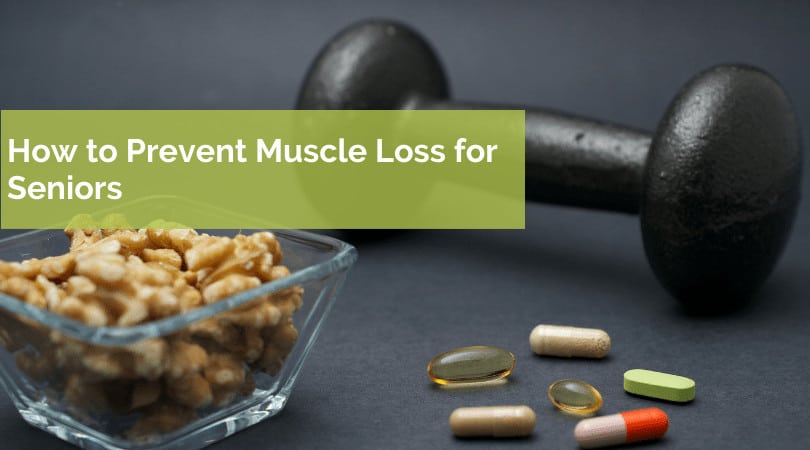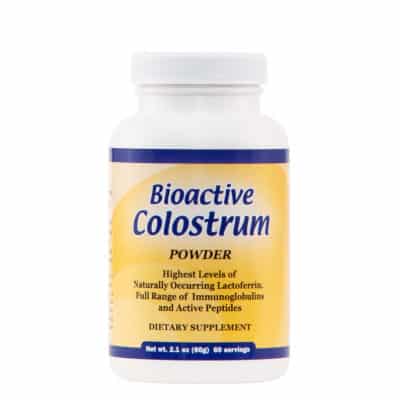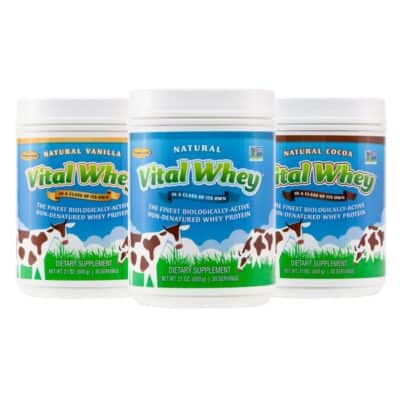How to Prevent Muscle Loss for Seniors
Oscar Wilde said, “With age comes wisdom”, but what he didn’t tell you was that wisdom was accompanied by bone and muscle loss. As you grow older, it becomes harder to maintain physical fitness due to the fact that your muscle mass and bone density decrease. Many seniors suffer from structural physical problems (like arthritis and osteoporosis) as a result of age-related muscle wasting.
Sarcopenia (another term for muscle wasting), impacts as many as 50% of adults older than 80. This is a significant problem as muscle makes up more than 60% of our body mass and is essential for living a healthy and active life.
What if there was a way to deal with sarcopenia? What if you could slow bone/muscle loss and maintain a lean body mass all while staying in good shape even as you age?
The truth is some muscle loss can be prevented or slowed with a combination of adequate protein intake and regular exercise. Whey protein for seniors is a great way to get more muscle-supporting protein into your diet in order to help delay the effects of muscle loss.
What Causes Sarcopenia?
Sarcopenia is the medical term for age-related loss of muscle mass. It’s causes are varied and can be attributed to or exacerbated by the following:
- Decrease in the production of hormones like testosterone, human growth hormone, and insulin-like growth factor-1 (IGF-1). During puberty, your body produces a lot of these hormones in order to grow. As you age, the production of these hormones decreases, leading to a decrease in muscle growth.
- Reduction of nerve cell activity which is responsible for coordinating movement in your body. Have you ever noticed that as people age it becomes harder to move around? Age takes a toll on the nerve cells in your brain which stimulate movement in your muscles, meaning less muscular electrical activity even when you do move around.
- Inefficiency of protein synthesis. As you grow older, it becomes harder for your body to break down and absorb amino acids from food, as well as turn those amino acids into protein. This reduces the amount of nutrients available, decreasing the amount of new muscle tissue your body can make. Insufficient intake of protein and/or calories to sustain muscle. When you are younger it’s often easier to meet or exceed the necessary calories to function and grow. As you age, it’s common to lose taste buds and sensitivity to certain flavors and textures of food. This change in perspective can impact interest in foods and impair a person’s ability to meet their daily nutrient and calorie needs. Inadequate calorie intake leads to the breakdown of muscle mass. Not consuming enough calories leads your body to utilize existing muscle to retrieve and supply an energy source in order to keep vital organs functioning.
While there are many causes of muscle loss that are outside of your control, consuming enough calories and protein are some of the most significant things you can do to help protect existing muscle as you age.
Effects of Aging and a Sedentary Lifestyle on Muscle loss
Sarcopenia is believed to be a problem mostly for older people who lead sedentary lives with very little activity. However, you can be physically active and still end up suffering from this condition as a result of the factors listed above.
Did you know that muscle mass loss can begin as early as 30 years of age? You hit your physical peak in your 20s, but by the time you reach your 30s, you begin to lose both muscle function and mass. The decrease in muscle mass begins at a slow rate–up to 5% per decade after your 30s–but that rate increases with every passing decade.
By the time you hit your 60s and 70s, there’s a very real risk that the sarcopenia will make a significant impact.
Thankfully, that’s where whey protein for seniors comes in handy, increasing your daily protein intake to support your existing muscle.
How Whey Protein for Seniors Can Help to Counteract Muscle Loss
Whey protein provides your body with the amino acids needed to build muscle. Many whey protein supplements also contain a bit of carbs for energy and vitamins to boost your metabolism, but in the end, it’s mostly amino acids–specifically, the nine essential amino acids that your body uses to produce muscle.
Protein is used to repair and restore muscle fibers that have been damaged during your workouts (this is a good thing, don’t worry!). This is how you maintain muscle strength, if you provide your body with the raw materials it needs to make repairs.
Whey protein fuels your body with amino acids that are vital to build healthy muscle tissue. When you add in a moderate workout (resistance training and cardio), it accelerates the growth of new muscle tissue. Your body can only perform one action at a time (break down or increase muscle tissue). As long as you are building new muscle tissue you will slow the loss of muscle mass.
Whey Protein as Part of Sarcopenia Treatment
Want proof that whey protein for seniors works? In 2008, the medical journal of Nutrition Research published a study that examined how whey protein impacted the growth of muscle tissue. Fifteen senior citizens participated in the test. All were given either 15 grams of whey protein, 6.7 grams of essential amino acids, or 7.5 grams of non-essential amino acids.
In the three hours after taking the supplement, the researchers measured the participants’ phenylalanine balance. This is a marker for protein creation in the body. The group that consumed whey protein saw a drastic increase in their phenylalanine balance, while the other two groups didn’t.
If it was just about the amino acids provided by whey protein, you would expect to see the same result in the essential amino acid group, which was not the case. Whey protein outperformed the others.
Not only that, but the insulin response during that time increased far more for the whey protein group. Insulin is a hormone needed to make new muscle (as well as many other important functions), so this a good sign for muscle repair after consuming whey protein.
The study summed up its findings in this succinct statement: “In conclusion, whey protein ingestion improves skeletal muscle protein accrual through mechanisms that are beyond those attributed to its essential amino acid content.”
What does this mean? Simple: whey protein is more than just amino acids! It provides an important role as part of a well-rounded sarcopenia treatment for seniors.
Seniors who are concerned about muscle loss should consider adding whey protein to their routine. Whey protein does more than just provide the body with the essential nutrients for muscle. Its effects extend far beyond basic muscle growth and include prevention of muscle loss, increased energy production, and optimization of metabolic function.
How Much Whey Protein for Seniors?
Now that you know whey protein can prevent or delay sarcopenia for seniors, it’s time to ask the next question: HOW MUCH should I be taking?
Protein needs should be personalized to the individual, based on height, weight and physical activity. The average older adult needs between 1.2-2.0 grams/kg body weight. For an average older adult who weighs 150 pounds (about 68 kg), this would translate to 82-136 grams per day from all food sources.
For high protein recipes, check out our recipe section.
Whey protein can help you reach those protein needs. The average serving of whey protein powder supplements contains anywhere from 15-30 grams of whey protein. A daily scoop or two can help you increase your intake in a delicious way.
The beauty of whey protein supplements is that they contain a balance of protein, fats, and carbs. A whey protein smoothie can be a great meal replacement. Consume a whey protein shake or smoothie immediately after your workout, and you’ll give your body the nutrients needed to repair, restore, and grow muscle. As a bonus, you’ll have more energy, thanks to the carbs and amino acids!
If you want a clean, natural whey protein supplement, try our Vital Whey. Made from 100% grass fed cow’s milk, it’s pure and easy for your body to break down and absorb. Each serving delivers 15 grams of whey protein, along with plenty of calcium and potassium to keep your bones healthy. By adding whey protein to your diet, you ensure that your body has everything it needs to prevent muscle mass and bone density loss.
References:
- Walston JD. Sarcopenia in older adults. Curr Opin Rheumatol. 2012;24(6):623-627.
- Santilli V, Bernetti A, Mangone M, Paoloni M. Clinical definition of sarcopenia. Clin Cases Miner Bone Metab. 2014;11(3):177-180.
- Preserve your muscle mass. Published February 19, 2016. Accessed September 8, 2021. https://www.health.harvard.edu/staying-healthy/preserve-your-muscle-mass
- Katsanos CS, Chinkes DL, Paddon-Jones D, Zhang X-J, Aarsland A, Wolfe RR. Whey protein ingestion in elderly persons results in greater muscle protein accrual than ingestion of its constituent essential amino acid content. Nutr Res. 2008;28(10):651-658.
- Baum JI, Kim I-Y, Wolfe RR. Protein Consumption and the Elderly: What Is the Optimal Level of Intake? Nutrients. 2016;8(6). doi:10.3390/nu8060359
- Should You Take Whey Protein Powder After Surgery? - March 2, 2023
- How Much Protein is Too Much? - January 30, 2023
- Is Whey Protein Keto Friendly? - January 30, 2023






